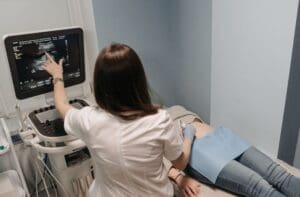By Taylor Jamison, K-State Research and Extension news service
Manhattan, KS– Ham is a staple for many families’ Easter feast, but between all the varieties available, consumers are often confused on how to safely prepare this holiday favorite.
Kansas State University food safety expert Karen Blakeslee said hams come in two categories: cooked/ready-to-eat, or uncooked.
“Package labels will state if it is uncooked or ready-to eat,” said Blakeslee, who also is coordinator of K-State’s Rapid Response Center for Food Science. “Always read the package label and instructions to be informed on how to safely handle the ham.”
Cooked Hams
Varieties of cooked ham include canned, vacuum packaged and spiral-cut cooked ham.
“Ready-to-eat ham may be called cooked,” Blakeslee said. “Ham that is not ready-to-eat but has the appearance of ready-to-eat products will bear a statement on the label indicating the product needs cooking.”
All cooked ham can be eaten cold, straight out of the package. If preferred hot, Blakeslee said ham should be heated to an internal temperature of 145 degrees Fahrenheit in an oven set at a minimum temperature of 325 F. If the ham has been repackaged in a location outside the processing plant — such as inside the grocery store deli — heat to an internal temperature of 165 F. Reheat any leftover cooked ham to 165 F.
Blakeslee said the best way to check the internal temperature is to use a food thermometer.
Uncooked Hams
Varieties of uncooked hams can include fresh, cured and smoked – with or without the bone. Blakeslee suggests reading the label and instructions on the package. Some may look like they are ready-to-eat, but they are not and must be cooked thoroughly before eating, she said.
The package should contain directions on how to cook the ham, but for additional guidance, the USDA offers an online timetable for cooking ham. There is a minimum cooking temperature for all uncooked hams.
“Ham that requires cooking before consumption must reach an internal temperature of 145 F (with a three-minute rest time),” said Blakeslee. “Set the oven no lower than 325 F.”
Blakeslee said the ham’s end quality can be affected by the type and size of uncooked hams. Cooking and resting time can differ significantly between varieties, total weight, and portion, so for the perfectly cooked ham, check the USDA guidelines.
Blakeslee publishes a monthly newsletter called You Asked It! that provides numerous tips on being safe and healthy. More information is also available from local extension offices in Kansas.












